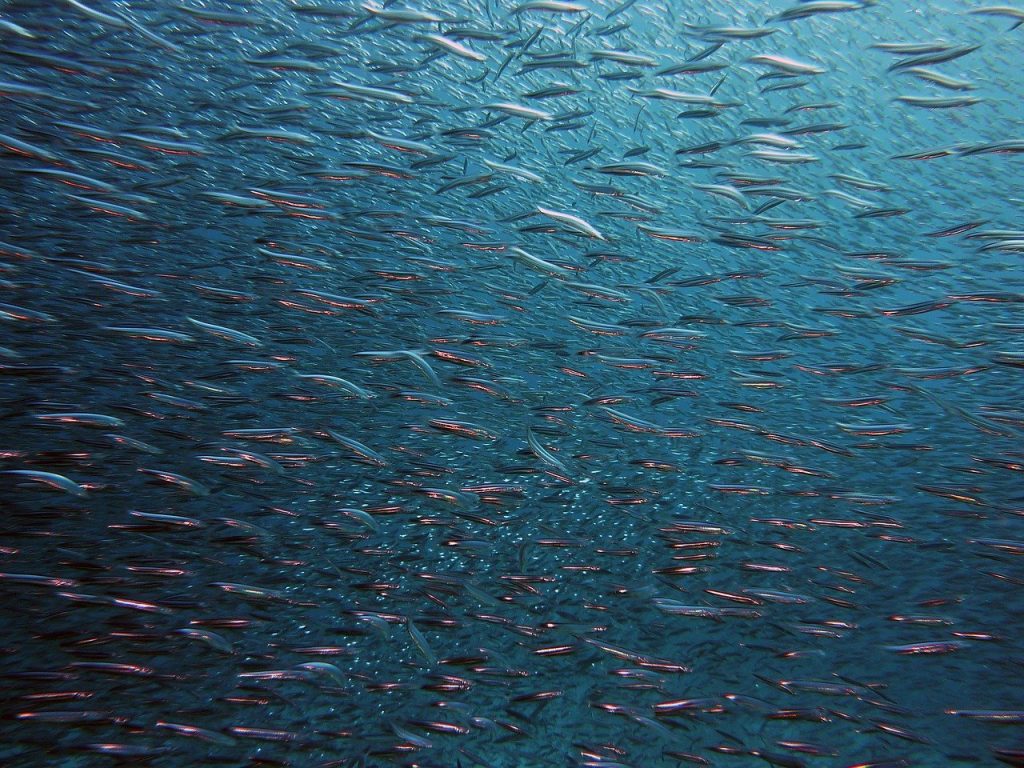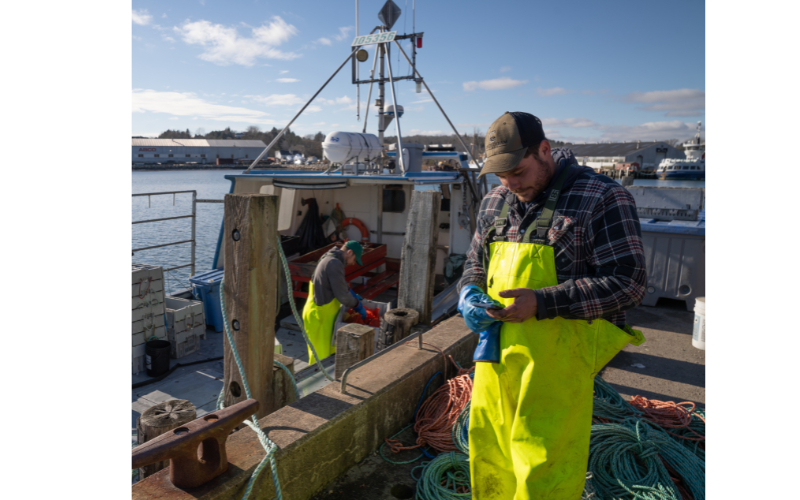Fish is the most commonly consumed animal protein worldwide, and “the seafood market value is expected to reach over 336 billion U.S. dollars by 2025.” Other research confirms that people are eating more fish – the global consumption of seafood will almost double between 2015 and 2050 – increasing from 80 million tonnes to 155 million tonnes.
With the marine ecosystems already at risk and the demand for seafood growing, how can the fishing industry align a profitable future for fishers and fisheries with one that’s also sustainable for the ocean and environment?
Using cutting-edge technologies to make fishing more precise and efficient will be key in ensuring the long-term viability of both the fishing industry and the ocean.
What is precision fishing?
Precision fishing tools use technology to help fishers better target their desired catch and reduce wastage.
While recent research shows that the “tech adoption has been sluggish in fisheries compared to aquaculture,” that’s starting to change as fisheries are taking notice of the benefits.
The goal of precision fishing is for more of a fisher’s time and money to go directly towards catching the fish they want – the target species – and less time and money going towards catching the fish they don’t want – or bycatch. Streamlining fishing efforts reduces fuel use and carbon emissions while also helping fishers avoid spending time, energy, and money catching and discarding or cheaply selling off the fish that neither the fisher nor the market wanted. Reducing wastage is better for fisheries and the ocean, and it also supports fishers in making a better living as they’re using their time and resources efficiently.
More efficient fishing allows quota to become virtual inventory and brings the efficiency of aquaculture to wild capture fisheries. If widely adopted, it could even help reduce large IUU boats as they don’t tend to invest in technology, especially technology that allows them to be tracked, so their fishing will become inefficient and their catch more expensive compared to what’s caught by legal, precision fishing methods.
Challenges facing the ocean and the fishing industry
Just how at risk are the ocean and the fishing industry today? These powerful statistics illustrate why the industry needs to fine-tune sustainable fishing practices to ensure a viable future for themselves and the ocean:
- “By 2025, oceans could contain 250 million metric tons of plastic—one per every three tons of fish which may reduce fish-survival rates”. – McKinsey
- 93 million tons of fish are caught annually and 38.5 million tonnes – or about 41% of all fish caught – are bycatch which often gets discarded and depletes fish stocks. – ScienceDirect
- Shark species are in sharp decline. Yet even though about 37% of shark and ray species are endangered, 97 million sharks are accidentally caught and dumped back into the ocean as bycatch because of imprecise fishing methods. – World Wildlife Fund
- Up to 30% of the world’s fisheries may be overfished, which means fish are being removed from the ocean faster than their population can recover, further depleting fish stocks. – Environmental Defense Fund
- Climate change will continue to profoundly impact marine ecosystems, affecting biodiversity and habit. If unchecked, it could decrease fishing revenues by 35% by 2050. – Nature
Benefits of precision fishing
While governments can regulate fishing, regulations alone aren’t the answer to decreasing bycatch and increasing fishing efficiency. That’s where solutions such as traceability and precision fishing come into play.
In their well-regarded report on precision fishing, McKinsey research concludes that “precision-fishing techniques can also contribute to improved management of ocean resources, which could increase industry profits by as much as $53 billion by 2050 while simultaneously raising the total fish biomass to at least twice the current level.”
Other benefits of precision fishing include decreased operating costs for fishers and fishing companies and lower-priced seafood for the end buyer such as restaurants and consumers.
How technology supports precision fishing
Gartner defines advanced analytics as “the autonomous or semi-autonomous examination of data or content using sophisticated techniques and tools, typically beyond those of traditional business intelligence (BI), to discover deeper insights, make predictions, or generate recommendations.” Using automation and artificial intelligence (AI), advanced analytics techniques can do complex data/text mining, pattern matching, forecasting, and analysis, all of which produce deeper, more nuanced insights and predictions. And all of which can be applied to fishing and fisheries.

Vericatch’s solutions are also designed to support precision fishing by operationalizing data to enhance efficiency. They also leverage skipper knowledge by presenting actionable data in a visual and interactive form that enables them to fish more accurately and with less risk to their business and fisheries stocks.
Our work on bycatch avoidance is an excellent example of using advanced analytics for precision fishing. Using FisheriesApp, vessels are able to visualize their encounters with sensitive species, in order to alert other vessels within the fleet to avoid fishing in that area. FisheriesApp also allows fishers and fisheries to accurately record what has been caught, where it was caught, how it was caught, etc. Having access to accurate and reliable information is critical for planning and executing efficient future fishing trips.
Better use of data will support a sustainable future for fishing

We believe that great data is at the core of sustainable fisheries management, and we also believe in bringing the true benefits of responsible fishing back to the fishing industry. So we’re constantly investing in the practical use of technology and building out our tools to help the industry improve economic and environmental sustainability.
In the near future, don’t be surprised to see a much greater focus on tech providers collaborating to build better, economical precision fishing solutions for the industry. Solutions will be architected to be cost effective for all scales of fishing vessels and for high-end fisheries as well as mid to low-end outfits. We’re excited about being part of building a more sustainable future for the industry and the planet.
If you’re interested in the possibilities for using technology to make fishing more efficient and precise, or you’d like more information on how our tools can support your business, don’t hesitate to get in touch.



